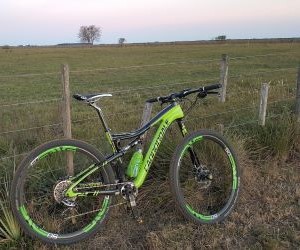Learn how to choose gravel bike geometry by comparing stability, comfort, and performance factors that match your riding style and terrain needs.
HOW DO I CONFIGURE GEAR RATIOS FOR CYCLOCROSS
Configuring gear ratios for cyclocross is essential for performance, efficiency, and adaptability on varied terrain. This guide breaks down gear selection, ratio calculations, and optimization strategies to help riders tackle mud, sand, climbs, and technical sections confidently.

Understanding cyclocross gearing
Cyclocross bikes face unique challenges compared to road or mountain bikes. Short, intense races across variable terrain require gear ratios that balance speed, power, and control. Understanding how chainrings and cassette cogs interact is the first step in optimizing performance.
Why gear ratios matter
Selecting the right gear ratio influences cadence, acceleration, and the ability to tackle steep climbs or technical sections. Too high a ratio can leave you struggling on hills, while too low a ratio may limit top-end speed on flats.
Optimizes power output across terrain.
Maintains consistent cadence for energy efficiency.
Reduces fatigue during repeated accelerations and dismounts.
Improves handling in mud, sand, and technical sections.
Key components of gear ratios
Gear ratio is determined by the combination of the front chainring and rear cassette. Cyclocross setups often prioritize versatility, with close-ratio cassettes for smooth cadence transitions and chainrings sized to balance climbs and flats.
Chainrings
Cyclocross chainrings typically range from 38 to 46 teeth. Smaller chainrings make steep climbs easier, while larger chainrings allow higher top speeds on flat sections. Single (1x) or double (2x) setups are common, with 1x systems simplifying shifting but limiting gear range.
1x setup: Simpler, less maintenance, good for technical races.
2x setup: Offers wider range, better for mixed terrain and longer races.
Compact options: Smaller inner ring for climbing efficiency.
Cassettes
Rear cassettes vary from 9 to 12 speeds, with cog sizes typically ranging from 11T to 36T. Wider ranges improve climbing ability but can create larger jumps between gears, affecting cadence consistency.
11–28T: Close spacing, suited for flatter, faster courses.
11–32T: Balanced choice for rolling terrain and moderate climbs.
11–36T or 11–40T: Ideal for steep, muddy, or sand-heavy courses.
Calculating gear ratios
Gear ratio is calculated by dividing the number of teeth on the chainring by the number on the rear cog. This ratio indicates how far the bike travels per pedal revolution. Higher ratios mean more distance per pedal but require more force.
Example: 42T front / 21T rear = 2.0 gear ratio.
Lower ratio (e.g., 1.5) = easier to pedal on climbs.
Higher ratio (e.g., 3.5) = faster top speed on flat terrain.
Factors affecting gear choice
Several variables influence which gear ratios work best for cyclocross, including course profile, rider strength, cadence preference, and environmental conditions.
Course profile
Steep climbs, long straights, and technical sections require different gearing strategies. Analyze the course beforehand to select chainrings and cassettes that provide a smooth cadence throughout.
Courses with frequent climbs benefit from smaller chainrings and wider cassettes.
Flat, fast courses allow higher chainring sizes for top-end speed.
Technical sections favor gear combinations that maintain momentum without excessive pedaling effort.
Rider strength and cadence
Stronger riders may prefer higher ratios to leverage power, while lighter or less powerful riders may need lower ratios for efficiency. Optimal cadence (typically 85–95 rpm for cyclocross) guides gear selection to prevent fatigue and maintain speed.
Experiment with ratios in training to match cadence preference.
Adjust gearing for acceleration versus sustained speed.
Use cadence sensors or GPS data to optimize performance.
Environmental conditions
Mud, sand, and wet grass increase rolling resistance, requiring lower gear ratios to maintain smooth pedaling. Dry, firm courses allow higher ratios for faster speeds.
Lower ratios prevent wheel spin in slippery conditions.
Adjust chainring/cassette based on course surface and weather.
Consider versatility: a slightly lower overall range often handles mixed conditions better.
YOU MAY ALSO BE INTERESTED






